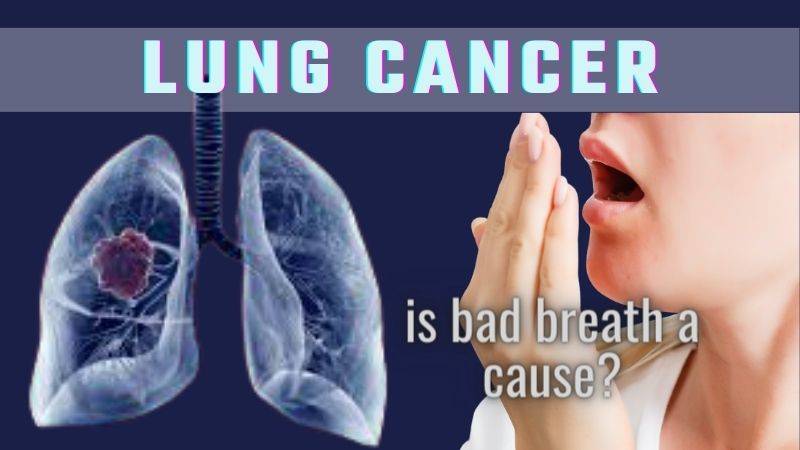Overview
Dennis Weaver, renowned for his indelible roles in enduring TV classics like “Gunsmoke” and “McCloud,” left a lasting legacy both on and off the screen.
His life was marked not only by a successful acting career but also by his commitment to environmental conservation.
Yet, there is another facet of his life that deserves recognition: his courageous battle with prostate cancer.
This disease took his life in 2006, but his journey underscores the importance of early detection and treatment in managing this common type of cancer in men.
What Is Prostate Cancer?

Prostate cancer begins in the prostate, a small, walnut-sized gland that produces seminal fluid in men that helps keep the sperm in good shape for making babies.
It is one of the most prevalent cancers among men, particularly those over the age of 65.
The disease can range from slow-growing tumors that require minimal intervention to aggressive types that spread quickly and necessitate comprehensive treatment.
What Are The Warning Signs?

The symptoms of prostate cancer can vary widely. Early-stage prostate cancer often exhibits no signs, but as the disease progresses, symptoms may include difficulties in
- Urinating
- Blood in the urine or semen
- Pelvic discomfort
- Bone pain
The lack of early symptoms highlights the importance of regular screenings, particularly for those with risk factors such as older age, family history of the disease, and certain racial and ethnic backgrounds.
What Are The Different Types of Prostate Cancer?
If a doctor says you have prostate cancer, it’s usually a type called an adenocarcinoma. This kind of cancer begins in the parts of your prostate that make fluid.
It’s very unusual for prostate cancer to start from other kinds of cells.
There are other, not-so-common types of prostate cancer, including:
- Small cell carcinomas
- Transitional cell carcinomas
- Neuroendocrine tumors
- Sarcomas
How Does It Cause?
It starts when the cells in the prostate start to act weird.
Normally, cells follow rules that are written in their DNA, like a recipe. But sometimes, these cells don’t follow the rules. They start to grow and split into more cells faster than they should. They also don’t die off when they’re supposed to.
Over time, these rule-breaking cells pile up and form a lump (or tumor) that can start to grow into other parts of the body nearby.
Sometimes, some of these cells can escape and move to other parts of the body, which is something normal cells can’t do.
What Are The Risk Factors?
There are a few things that can make it more likely for you to get prostate cancer:
- Getting older: The older you get, the higher your chances are. Most people who get prostate cancer are over 50. In fact, about 60% of cases are in people who are older than 65.
- Being Black or of African descent: People who are Black or have African roots are more likely to get prostate cancer. The cancer can also be more aggressive and start earlier, before the age of 50.
- Family history: If someone in your close family has had prostate cancer, you’re two to three times more likely to get it too.
- Certain genes: If you have Lynch syndrome or if you’ve inherited certain changed genes that can make breast cancer more likely (BRCA1 and BRCA2), you’re also at a higher risk for prostate cancer.
There are also some other things that might make prostate cancer more likely, but doctors aren’t completely sure about these. They include:
- Smoking
- Having a condition called prostatitis
- Being very overweight (having a BMI over 30)
- Having had sexually transmitted infections (STIs)
- Being exposed to a chemical called Agent Orange that was used during the Vietnam War
How To Diagnose If You Are Suffering From Prostate Cancer?

Check-ups can find prostate cancer early. If you’re not at a high risk, you might get your first check-up at 55 years old. If you’re more likely to get prostate cancer, you might get checked earlier. Usually, these check-ups stop after you’re 70 years old.
If the check-up shows that you might have prostate cancer, you might need more tests.
Check-up tests for prostate cancer:
- Digital rectal exam: Your doctor puts a gloved, lubricated finger into your bottom to feel your prostate gland. If there are lumps or hard spots, it could be cancer.
- Prostate-specific antigen (PSA) blood test: Your prostate gland makes a protein called PSA. If you have a lot of PSA, it could mean you have cancer. But, it could also mean you have a non-cancerous condition like BPH or prostatitis.
Extra tests for prostate cancer:
Sometimes, your doctor might think you have prostate cancer, but they might not need to confirm it right away.
For example, if your doctor thinks the tumor is growing slowly, they might wait to do more tests because it’s not bad enough to need treatment.
But if it’s growing fast or spreading, you might need more tests, like a biopsy.
- Imaging: An MRI or a transrectal ultrasound takes pictures of your prostate gland. These can show suspicious areas that might be cancer. These results can help your doctor decide if they need to do a biopsy.
- Biopsy: During a biopsy, a healthcare provider takes a small sample of tissue to test for cancer. This is the only sure way to know if you have prostate cancer and how bad it is. Your doctor might also test the tissue for certain features (like changes in the cells) that might make them respond well to specific treatments.
How Prostate Cancer Be Treated?
The way doctors treat this cancer depends on many things including your overall health, whether the cancer has spread, and how fast it’s spreading.
You might work with different doctors, like urologists, radiation oncologists, and medical oncologists. Prostate cancer found early can usually be cured.
Here are some ways doctors manage and treat prostate cancer:
- Monitoring: If the cancer is growing slowly and not spreading, the doctor might just keep an eye on it.
- Active surveillance: You’ll have regular tests and check-ups to keep track of the cancer. If the cancer gets worse, your doctor can start treatment.
- Watchful waiting: This is similar to active surveillance but is used for people who might not benefit from treatment. The focus here is on managing symptoms rather than trying to get rid of the cancer.
- Surgery: A surgery called a radical prostatectomy can remove the prostate gland. This often gets rid of the cancer if it hasn’t spread.
- Open radical prostatectomy: The doctor makes a cut from your belly button to your pubic bone to remove your prostate. This method is less common now.
- Robotic radical prostatectomy: The doctor makes small cuts and uses a robot to help do the surgery.
- Radiation therapy: This can be a standalone treatment or used with other treatments. It can also help with symptoms.
- Brachytherapy: Radioactive seeds are placed inside your prostate to kill the cancer cells without harming the healthy cells around them.
- External beam radiation therapy (EBRT): A machine sends powerful X-ray beams to the tumor. Certain types of EBRT can aim the radiation right at the tumor while not harming healthy tissue.
- Systemic therapies: If the cancer has spread outside your prostate, these treatments send substances throughout your body to kill the cancer cells or stop them from growing.
- Hormone therapy: This type of therapy uses medicine to stop the hormone testosterone from helping the cancer cells grow or lowers the amount of testosterone in your body. There’s also a surgery that can remove the testicles so they can’t make testosterone anymore.
- Chemotherapy: This uses medicine to kill cancer cells. It can be used alone or with hormone therapy if the cancer has spread.
- Immunotherapy: This helps your immune system fight the cancer cells. It can be used to treat advanced or recurrent cancer.
- Targeted therapy: This focuses on the changes in cells that make them become cancerous, stopping them from growing and multiplying. This can kill cancer cells with certain mutations.
- Focal therapy: This is a newer treatment that kills tumors inside your prostate. It’s often used for low-risk cancer that hasn’t spread. Some of these treatments are still being studied.
- High-intensity focused ultrasound (HIFU): High-energy sound waves create heat that kills cancer cells in your prostate.
- Cryotherapy: Cold gases freeze the cancer cells in your prostate.
- Laser ablation: Heat from a laser kills the cancer cells in your prostate.
- Photodynamic therapy: Medicine makes the cancer cells sensitive to certain types of light. A doctor then uses that light to kill the cancer cells.
Side Effects of the Treatment
Possible side effects of this cancer treatment can include:
- Incontinence: This means you might leak pee when you cough or laugh, or you might often feel like you need to pee even when you don’t really have to. This usually gets better on its own within the first six to twelve months.
- Erectile dysfunction (ED): Treatment could hurt the nerves in your penis that help you get and keep an erection. Many people can get these functions back within a year or two, or even sooner. Meanwhile, medicines like sildenafil or tadalafil can help by increasing blood flow to your penis.
- Infertility: Treatments could affect your ability to make or release sperm, which could make it hard for you to have children. If you want to have children later, you can save your sperm in a sperm bank before starting treatment. After treatments, you might have a procedure where sperm is taken right from your testicular tissue and put into your partner’s uterus.
Remember, if you’re having any side effects from treatment, talk to your doctor. They can often suggest medicines and procedures that can help.
Living With Prostate Cancer
If your doctor finds your prostate cancer early, your chances of beating it are really high.
Nearly all people—99%—who get diagnosed with cancer that hasn’t moved outside their prostate are still alive at least five years later.
However, if the prostate cancer has moved, or metastasized, to other parts of your body, survival rates aren’t as high.
About 32% of people with this kind of advanced prostate cancer are still alive five years later
Are Prostate Problems Always A Sign Of Prostate Cancer?
No, not all problems with your prostate mean that you have prostate cancer.
There are other conditions that can cause similar symptoms, such as:
- Benign Prostatic Hyperplasia (BPH): Almost everyone with a prostate will develop BPH at some point. This condition makes your prostate bigger, but it doesn’t make you more likely to get cancer.
- Prostatitis: If you’re under 50 and your prostate is enlarged, it’s most likely due to prostatitis. This is a non-cancerous condition that causes your prostate to become inflamed and swollen, often because of a bacterial infection.
Dennis Weaver’s Battle and Legacy

When Dennis Weaver was diagnosed with prostate cancer, he faced his condition with the same determination and resilience that characterized his acting career.
He navigated treatment options, which at the time primarily included surgery, radiation therapy, hormone therapy, and chemotherapy.
Weaver’s journey with prostate cancer illuminates the critical importance of early detection.
By sharing his story, Weaver hoped to encourage men, especially those at higher risk, to engage in regular screenings and take proactive steps towards their health.
Since Weaver’s passing, there have been notable advancements in the diagnosis and treatment of prostate cancer.
Newer methods such as high-intensity focused ultrasound (HIFU) and stereotactic body radiotherapy (SBRT) offer more precise treatments, reducing side effects.
Moreover, advancements in genetic testing allow doctors to determine which men are at a higher risk of developing aggressive forms of prostate cancer.
This knowledge helps guide decisions about the timing and method of treatment.
His foundation, The Institute of Ecolonomics, continues to advocate for sustainable living and environmental conservation.
His battle with prostate cancer brought awareness to this widespread disease, underlining the importance of regular check-ups, early detection, and continued research in cancer treatments.
Also Read






